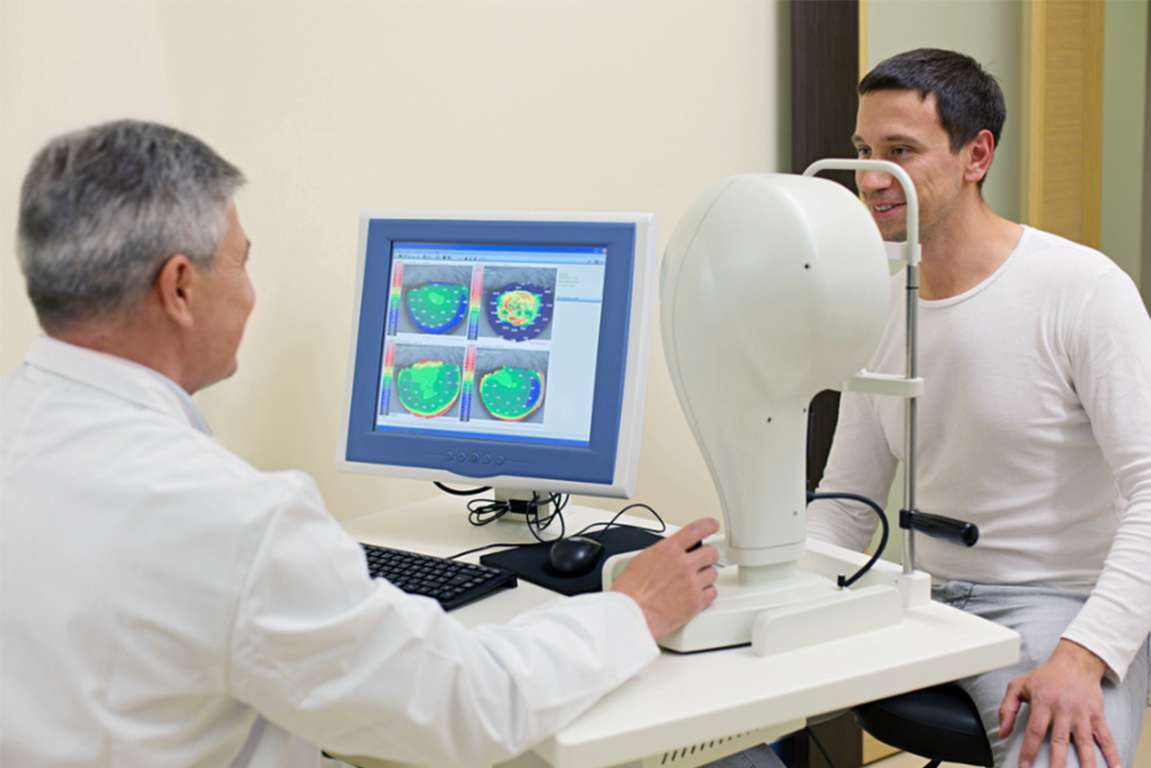
Corneal collagen cross-linking (CXL) is a successful technique used to slow the progression of corneal ectatic disease, mainly keratoconus. It is able to achieve this aim with a single application of vitamin B2 (riboflavin) and ultraviolet-A light to the corneal stroma where it results in crosslinks to form between the collagen fibers, resulting in corneal stiffening.
Keratoconus is a common bilateral disorder that causes progressive thinning of the cornea, transforming the normally regular dome-shaped cornea into a more irregular conical profile. A defect in collagen allowing enzymatic degradation and fibrillary slippage is believed to be the cause of the weakened cornea. The resulting irregular astigmatism and corneal opacities lead to visual impairment. CXL can be used to treat keratoconus by stiffening the cornea, thus preventing the progressive change in shape.
Keratoconus typically presents during adolescence; it normally progresses until approximately 40 years old, by which time natural cross-links within the cornea have become established.CXL offers the opportunity to change the natural history/evolution of the disease. The aim of the procedure is to slow the progression of this disease thus maintaining vision, and to prevent advanced changes that require more invasive therapy.
Techniques Used for Corneal CXL
Current techniques for CXL involve the use of riboflavin drops and UV-A light exposure to the cornea. The several methods used are described in detail below.
Epithelium-Off CXL
The treatment technique used has become known as the Dresden protocol. The first step in this protocol is to remove the central 9 mm of corneal epithelium. The corneal surface is then saturated with 0.1 % riboflavin solution for 30 minutes, after which the eye is exposed to 370 nm of UV-A with an irradiance of 3 mW/cm2 over an 8 mm diameter for a further 30 minutes. Additional riboflavin drops are given every 5 minutes during UV-A exposure. Essentially, the riboflavin within the corneal stroma is activated by UV-A to produce a photochemical reaction that creates collagen and proteoglycan cross-links. The original Dresden protocol takes approximately an hour and is usually performed under topical anaesthesia. Following treatment, a short course of topical antibiotics and vitamin A eye ointment is prescribed, with further antibiotics and fluorometholone drops as necessary.
Epithelium-On CXL
Removal of the corneal epithelium in epithelium-off CXL (epi-off CXL) may results in an iatrogenic corneal abrasion, causing post-operative discomfort that may last around 5 days. During this period there is an associated risk of infection, stromal haze and corneal melting. In order to reduce these post-operative complications, attempts have been made to develop collagen cross-links through an undamaged cornea (epithelium-on CXL [epi-on CXL]). This involves administering a more concentrated and altered solution of riboflavin, combined with other agents in an attempt to increase corneal epithelial permeability.
Iontophoresis is a non-invasive epi-on CXL technique that uses a weak electrical current to introduce riboflavin into the corneal stroma without the necessity of corneal epithelial removal. A generator delivers a constant current of 1 mA locally to the cornea for a set duration, usually 5–10 minutes. Irradiation is then administered as in the standard protocol. This new technique has shown promising results. With a similar efficiency to the standard protocol and the absence of side effects associated with epithelial debridement, it may become the preferred way of slowing the progression of ectatic disease.
